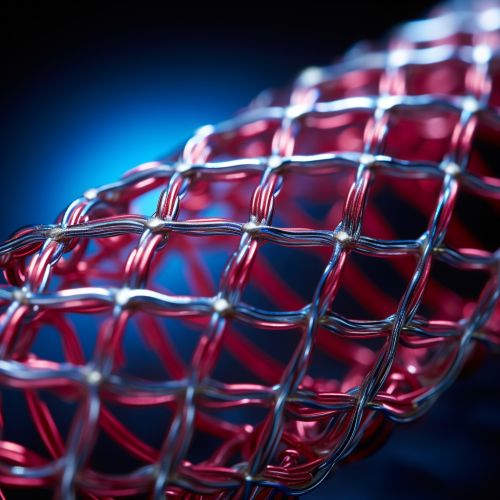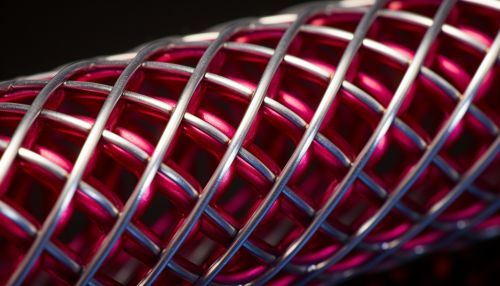Stents
Introduction
A stent is a small mesh tube that's used to treat narrow or weak arteries. Arteries are blood vessels that carry blood away from your heart to other parts of your body. A stent is placed in an artery as part of a procedure called percutaneous coronary intervention (PCI), also known as coronary angioplasty. PCI restores blood flow through narrow or blocked arteries. A stent helps support the inner wall of the artery in the months or years after PCI. Drug-eluting stents can help keep your artery open over the long term.


History
The history of stents dates back to the early 1960s when Charles Dotter first conceived the idea of angioplasty. However, the first coronary angioplasty, which did not include a stent, was performed by Andreas Gruentzig in 1977. The concept of using a stent to keep a blood vessel open was first proposed in 1986, and the first coronary stent implantation was performed by Julio Palmaz and Richard Schatz in 1987.
Types of Stents
There are several types of stents, including bare-metal stents, drug-eluting stents, and bioresorbable vascular scaffolds.
Bare-Metal Stents
A bare-metal stent is a stent without a coating. It is a mesh-like tube of thin wire. This type of stent may be used in patients who have a large artery that is easy to reach, or who are likely to have a surgery soon.
Drug-Eluting Stents
A drug-eluting stent is coated with medication that is slowly released to help prevent the artery from becoming blocked again.
Bioresorbable Vascular Scaffold
A bioresorbable vascular scaffold, also called a naturally dissolving stent, is designed to dissolve over time.
Procedure
The procedure to place a stent involves inserting a thin tube through a small puncture in a leg or arm artery. This tube, called a catheter, has a tiny balloon at its tip. The catheter is threaded through the artery until the tip reaches the narrow or blocked section. The balloon is then inflated to push the blockage aside and widen the artery. After the artery is open, the stent is placed.
Risks and Complications
While stents can relieve symptoms and reduce the risk of heart attack, they also carry risks. These include stent thrombosis, restenosis, and the risks associated with the procedure itself such as bleeding, arrhythmias, and kidney damage.
Aftercare
After a stent procedure, most people need to take medications, such as aspirin and a prescription anti-platelet drug, to prevent blood clots. Regular follow-up visits with the doctor are also important.
Future Developments
Research is ongoing to develop new types of stents and improve existing ones. This includes the development of stents that release drugs more slowly or over a longer period, stents that can be absorbed by the body, and stents that can be monitored remotely.
